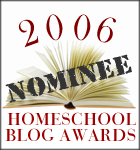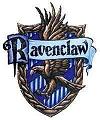
AS is an Autism Spectrum Disorder that involves difficulties with social interaction, non-verbal and verbal communication, and stereotyped obsessive behaviors. This sounds formidable, and it can be, but "Aspies" often look "normal" to others, although they seem to act just a little bit "different."
ABC Nightline and ABC News has been doing a series called Echoes of Autism about AS. Last night, Nightline ran a ten minute segment about the difficulties that students with AS have when they reach adolescence and middle school.
Middle school. John Stossel called middle school "the scorched earth zone of American childhood." A psychologist interviews on the Nightline program said several studies show that up to 90% of middle school students with AS are bullied every day. Every day!
I knew this statistic. And we had already had problems with bullying in N.'s elementary school experience. There were times of intense bullying interspersed with relatively calm times throughout for him. Sometimes it seemed to us as though all of our energy was going to keeping N. functioning in school and that there was none left over for actual learning. In the beginning of 4th grade, for example, N. spent most of his day under the table.
The statistics. Warnings from other parents that you cannot work and have a child
When I watched the Nightline segment, I was mentally congratulating myself on the wise decision we had made not to send N. to middle school.
And then John Stossel said that sentence. The one I wrote above. The one I will repeat again, in case you missed it. It is easy to miss, I think, because it fits the picture of reality most Americans have. He said:
Middle school is the "scorched earth zone of American childhood."
Think about t
Since we have taken N. out of school, I have had the opportunity to watch homeschooled kids interact in a variety of settings. At the grocery store. At the library. At "park day." At museum science classes. In all of these settings, the kids are interacting in multi-age groups with minimal adult supervision. And they are not cruel to each other. They gently tease sometimes, but they explain the jokes to those who don't get it right away. They seem to think independently and do not have that group "herding instinct" that teachers so often laugh about when discussing adolescents.
And it is not only homeschooled kids who are this way. We have been going to the skateboard park, N's newest "special interest," lately. (Very good to large motor coordination and proprioreception). There, kids from about mid-elementary age to high-school come to practice their 'boarding." They teach each other new "moves," discuss the fine points of velocity and balance, organize themselves so that there are no collisions--and there really are no collisions--and help each other out. There are no adults in the Skatepark. N-O-N-E. Adults are elsewhere in the park, or gossiping happily on the picnic benches, but no adults are supervising the skaters. And the kids are civil with each other, and more, they are friendly and engaged in something of interest to all of them. They want it to work out so they can become better 'boarders.
From all of these observations, I have concluded that they way kids treat each other in middle school is not "normal" for them. It is abnormal. They are as nervous and jumpy as lab rats raised in an impoverished environment. It is not "normal" for social mammals to be isolated from their community and raised in an age-segregated environment. Animal behaviorists know that this is a recipe for making an animal "mean to the bone," as the little guy with AS said when he described his bully to John Stossel.
So why do we accept the antisocial behavior of middle school students as "normal?" Why are older people often afraid of adolescent energy?
My hypothesis is that the problem lies not with the kids, but with the environment in which we force them to live and grow and learn. The environment is age-segregated,intellectually unstimulating, encourages competition for teacher time and attention, crowded, noisy, and has only poor nutrition available. It is definitely not the optimal environment for young mammals out to learn how to be social in their culture.
It is so interesting that the first objection I am met with when I tell someone that I am homeschooling is the "S" question. "What about Socialization."
N. has so much more energy to put into learning social skills now that he is not in an environment that stresses him so much that he can barely function.
He skateboards, he plays chess, he studies electricity and magnetism, he goes to astronomy club meetings. In all of these places, he interacts with people of a variety of ages, all of whom want to share a particular interest. He is allowed to talk to people naturally, thus he learns social communication skills in the environment where they are to be used. What a concept!
Now I want to be clear that I do not think that school caused N.'s AS or that it is cured now that he is not in that environment. Rather, I believe that when people interact in real social situations where they are together in the pursuit of a common interest or goal, they are happy to accomodate differences among themselves. It is natural for people to want to share what they love with others. AS kids are no different--they want that, too. All of those good things that contribute to "flow" in human social situations are present when people get together voluntarily to learn together: affinity, intellectual stimulation, joy. I have very rarely seen them in my years teaching secondary education. And yet it is these things that de-stress a difficult learning for kids with AS. Affinity, intellectual stimulation, joy. These are the components need for developing social skills in any human being.
My answer to people who bring up the "S" word is that school is the least likely place for optimal social interactions to take place. It is up to the schools to make changes that will provide our children with socialization appropriate to human children. If and when they do so, I will consider the school option. Until then, to use another "S" word" Sayonara.























